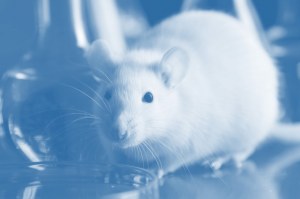
Fibrotic Disease Models
Bleomycin-Induced Lung Fibrosis
Bleomycin-induced pulmonary fibrosis has been a useful pre-clinical model in several species and is most prevalent in rodent models to evaluate potential prophylactic and therapeutic drugs for IPF. As a tissue injury and repair model, bleomycin has contributed significantly to studies of the pathobiology of pulmonary fibrosis. The induction and progression of the disease in rodents is of a short duration, making it a practical model for evaluating test compounds in preclinical research. Although major drawbacks for this model have been its high mortality rate and inconsistency in the induction of disease, our extensive experience with this model has led to a proven track record of highly reproducible and successful preclinical studies.
- Pulmonary fibrosis is induced in mice and rats by the instillation of clinical grade bleomycin into the lungs by the oralpharyngeal route or osmotic pump
- Models include therapeutic as well as prophylactic study designs spanning from two weeks to five weeks post-bleomycin administration
- Output from the studies can range from basic readouts of in-life parameters of clinical symptoms, bronchoalveolar lavage (BAL) fluid analysis, and hydroxyproline assays of lungs to more complex functional readouts using FlexiVent and airway hyper-reactivity using unrestrained whole body plethysmography
Liver Fibrosis
Virtually all chronic liver diseases end in liver fibrosis and cirrhosis. Fibrosis is characterized by the accumulation of fibroids rich in fibrillar collagens in the extracellular matrix of the liver. Many disorders have the potential to cause liver fibrosis, including chronic viral hepatitis, parasite infection, inborn errors of metabolism, and toxic damage due to alcohol consumption. In all cases, the end result of cirrhosis is liver failure and portal hypertension, which is a major cause of morbidity and mortality worldwide.
- Liver fibrosis based on the induction by repeated carbon tetrachloride (CCl4) or Thioacetamide (TAA) administration in mice and rats, respectively
- Models include therapeutic as well as prophylactic evaluation of test compounds in studies ranging from a couple of weeks to beyond six weeks
- Output from the studies range from monitoring of clinical symptoms, detailed necropsy and organ fixation for subsequent histology
- Evaluation of serum samples for elevated liver enzymes for terminal blood collection (mice) or serial blood collection (rats) can also be performed
>> For more information or quote request, contact us

